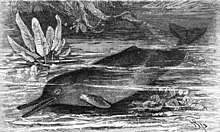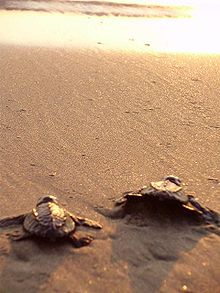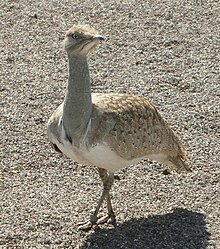Fauna of Sindh

The fauna of Sindh live in an area with a
population.Habitat and wildlife
Due to the climate of Sindh, its forests support average population of jackals and snakes. The



Nara Canal region
Another

Animals of mythical proportions
Some unusual sightings of Asian cheetah occurred in 2003 near the
Along the coast
Between July and November when the

Crocodiles are rare and inhabit only the backwaters of the Indus, the eastern Nara channel. Some population of marsh crocodiles can be very easily seen in the waters of Haleji Lake near Karachi. Besides a large variety of marine fish, the plumbeous dolphin, the beaked dolphin, rorqual or blue whale and a variety of skates frequent the seas along the Sindh's coast. The pallo (sable fish), though a marine fish, ascends the Indus annually from February to April to spawn. The rare houbara bustard also finds Sindh's warm climate suitable to rest and mate. [citation needed]

See also
- Fauna of Pakistan
- Flora of Sindh
- Flora of Pakistan
- Climate of Sindh
